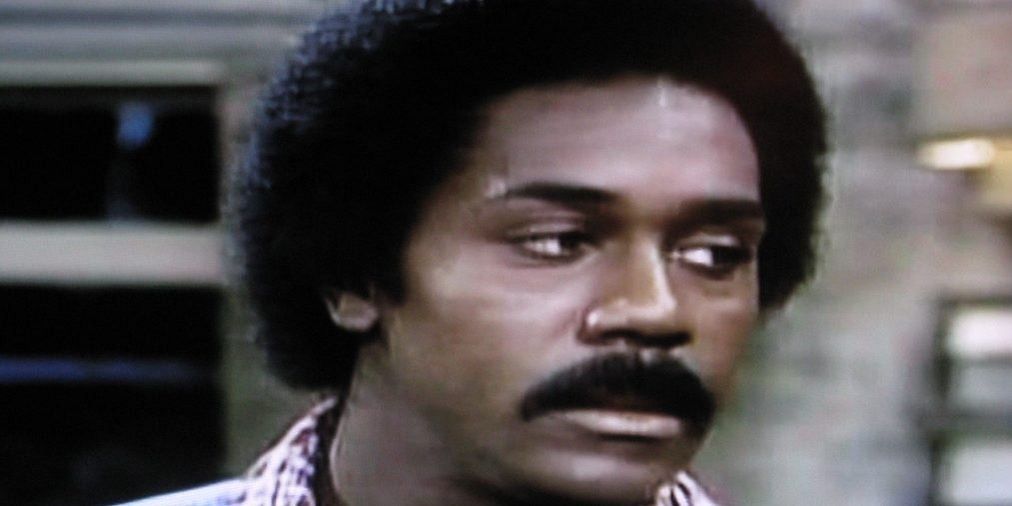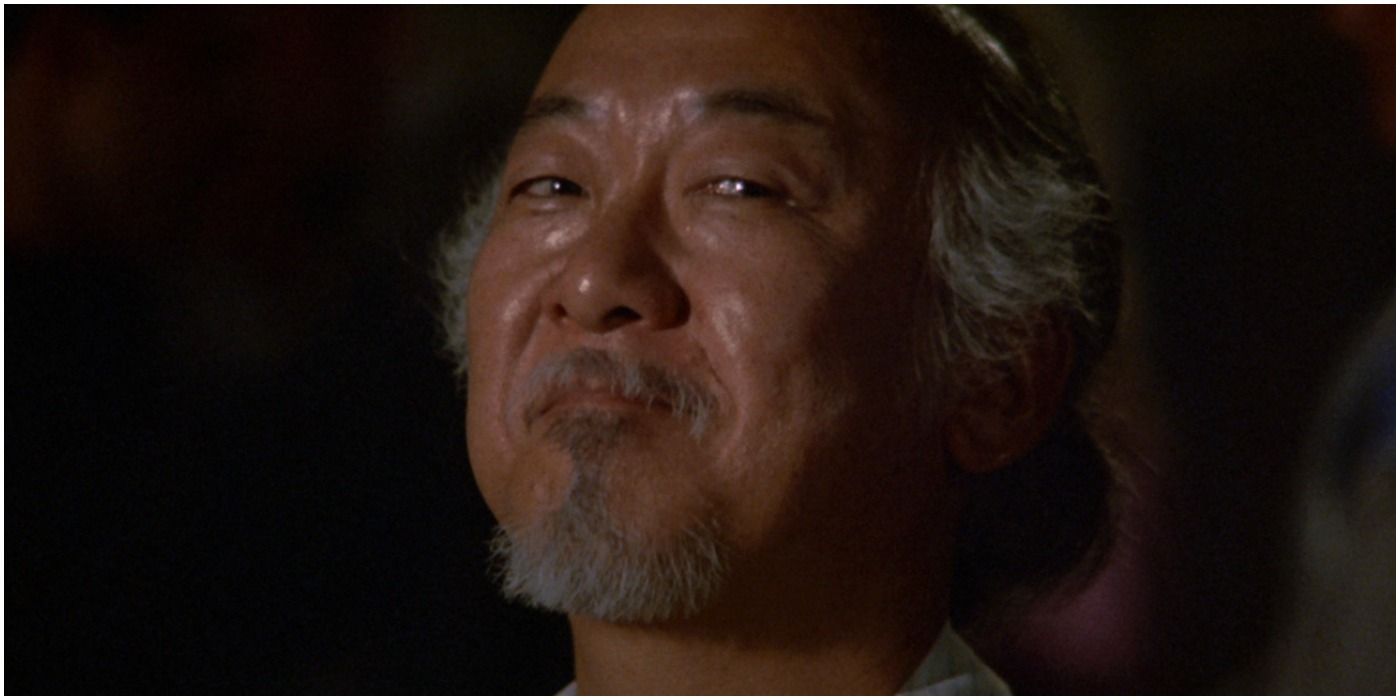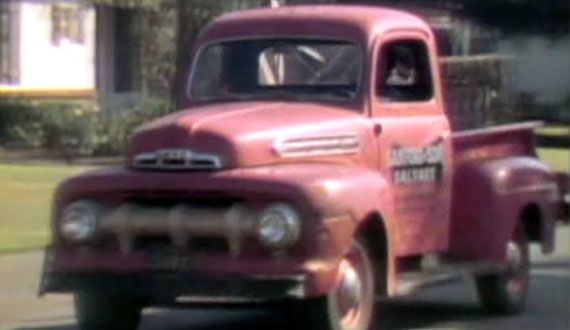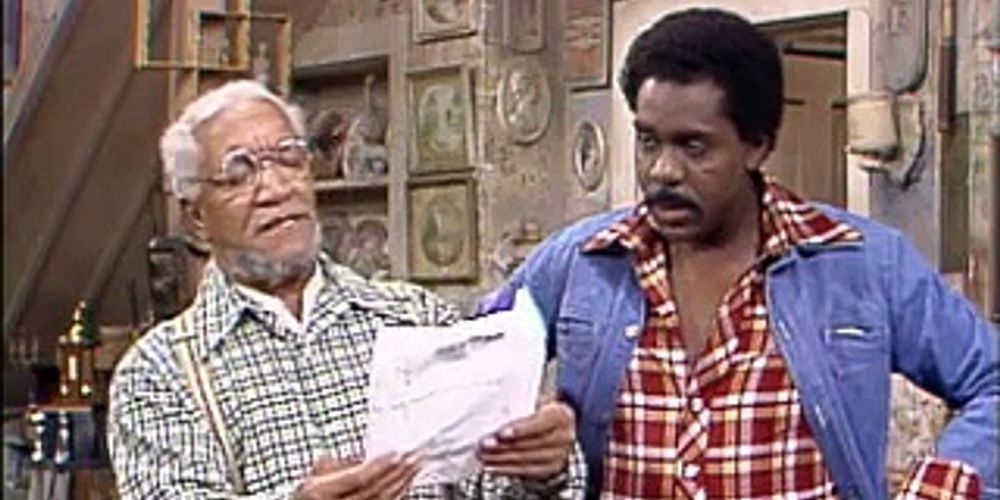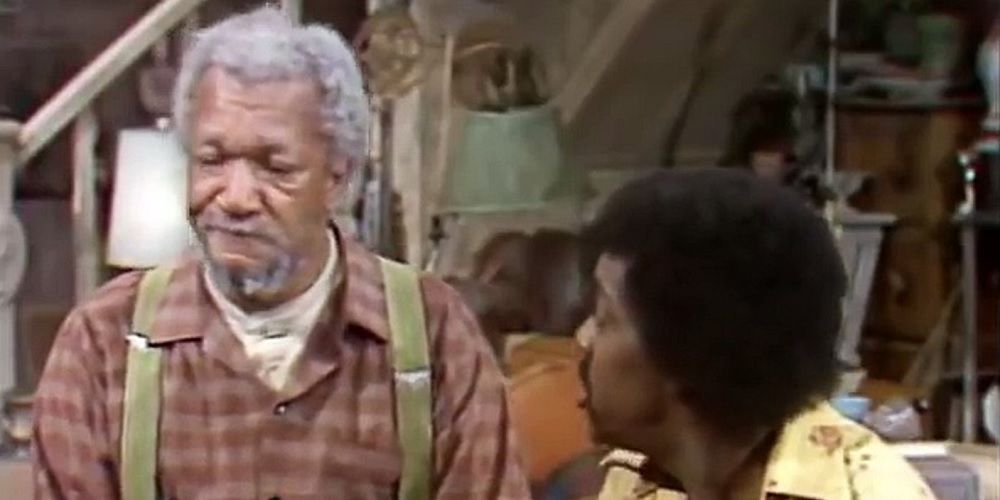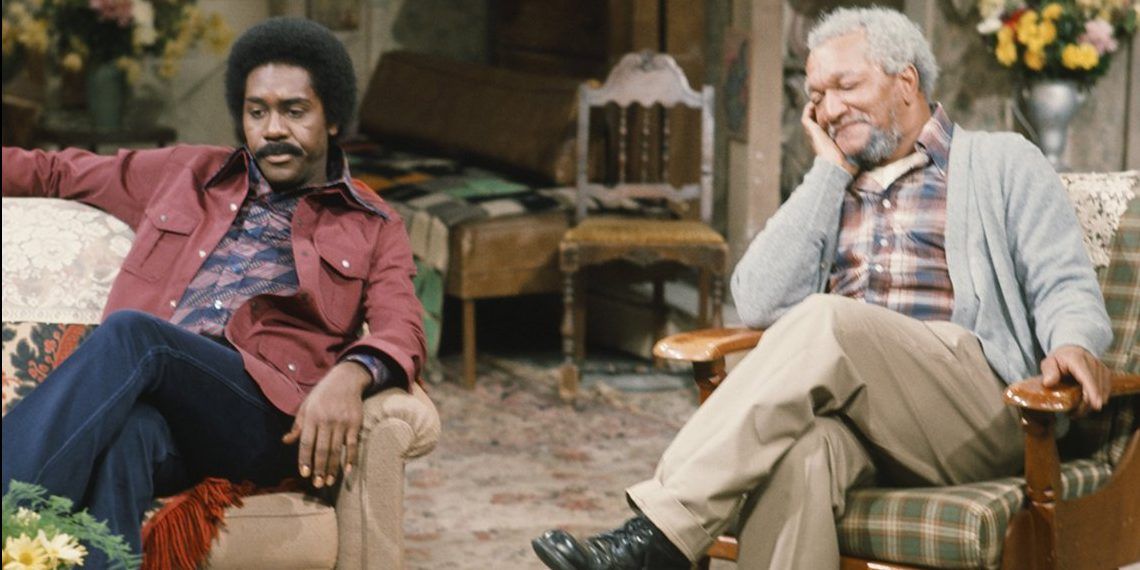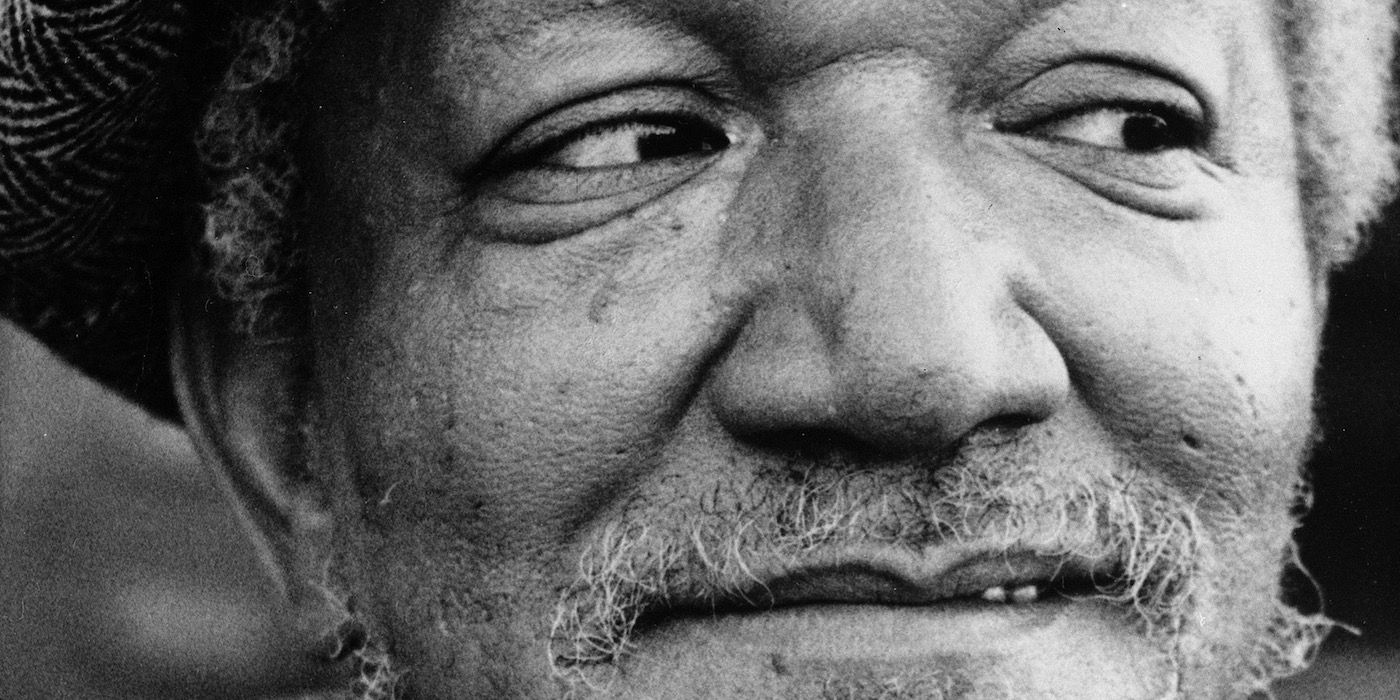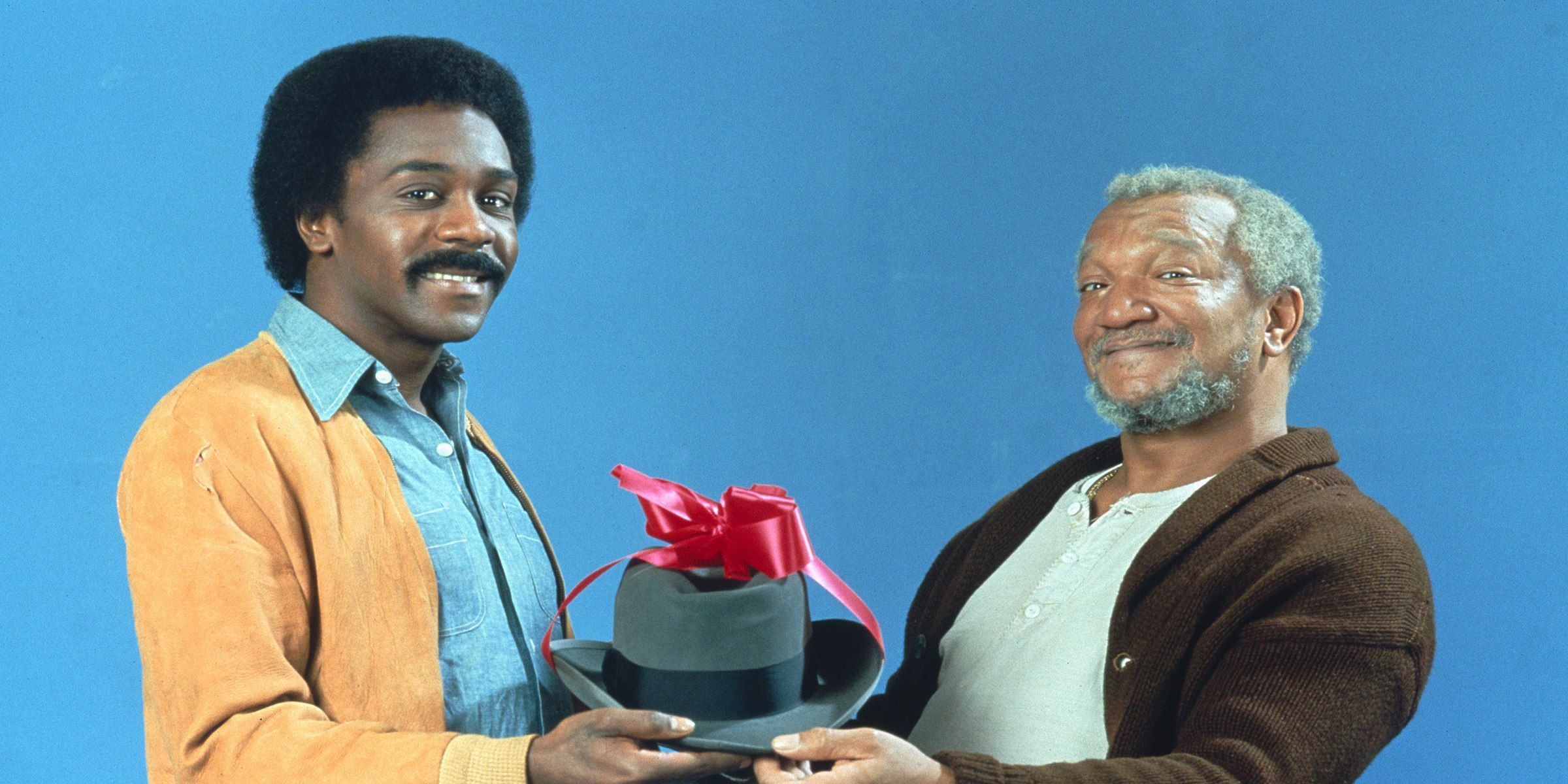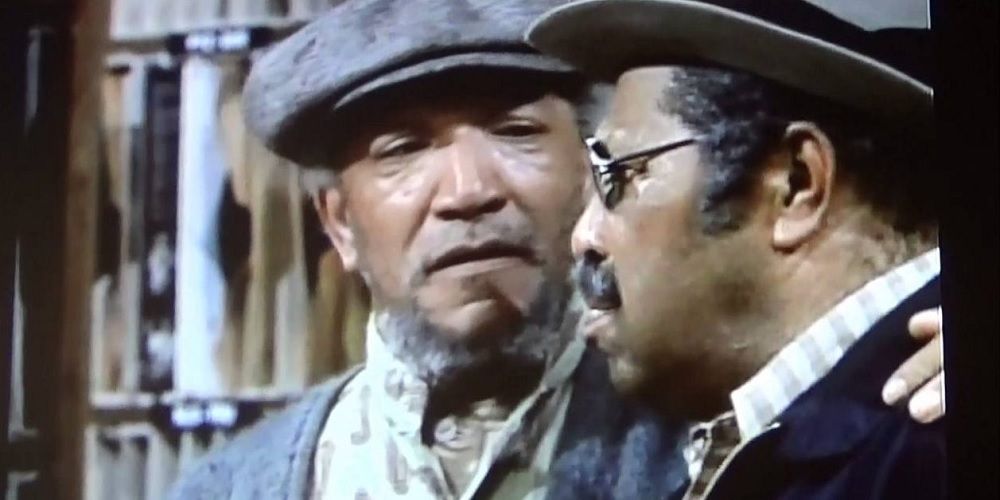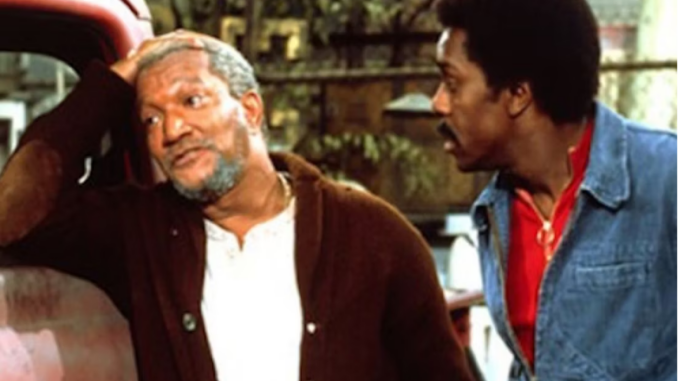
In 1972, Sanford and Son arrived to shake up the television landscape. One of many successful Norman Lear shows, the sitcom is still enjoyed and analyzed to this day. Redd Foxx played father Fred Sanford, and Demond Wilson played his son, Lamont. The two run a junk shop on the show.
Sanford and Son premiered a year after Lear’s All in the Family and overlapped in years with The Jeffersons. The show was actually based on a British sitcom called Steptoe and Son that began in 1962. As with many chapters of television history, Sanford and Son has both strengths and weaknesses. Here are five reasons why the show has aged well (and five why it has not).
Has: Shakespeare Summaries
One of the best Sanford and Son episodes is season three’s “Lamont as Othello.” This episode highlights Lamont’s process as a budding actor. He is working on Shakespeare’s Othello. The story begins as Lamont runs lines with his friend, Rollo. Then, Lamont gets his dad out of the way because he has a colleague coming over to rehearse. The white actress, Marilyn, is playing Desdemona opposite Lamont’s Othello.
Fred spies on the rehearsal and thinks Lamont is choking Marilyn. Lamont clears things up with the most accurate one-sentence Shakespeare summary in existence: “Othello was a black man and he was married to this white woman, and he suspected her cheating on him, so he choked her to death.” High school students routinely need help to read Shakespeare, but Lamont had the know-how back in the 70s.
Has not: Ethnic/racial Slurs
In addition to African-American racial slurs and stereotypes, other ethnicities are derided on the show. For example, in a season five episode called “Sanford and Rising Son,” Sanford tries to turn his home into a Japanese restaurant with the help of chef Ah Chew (played by Pat Morita).
While it’s not impossible in real life (look up basketball player and coach Ah Chew Goo), the name Ah Chew was likely an intentional joke among writers. It does not work today.
Has: Resourcefulness
The very nature of Fred’s career is about taking old things and giving them a second (or third, or fourth) life. He is not only resourceful with his junk; he also seeks out additional opportunities for himself to get ahead.
Now, this is bad when it turns into tax evasion in the sixth season (Fred’s way out is a mail-order clergy ordination). Fred’s little schemes throughout the show are not always so dicey, though, and they are always creative.
Has not: Sexuality Jokes
The 1970s social climate still had a long way to go in the treatment of queer individuals. Sanford and Son is one of many examples. In a season three episode titled “Lamont, is That You?,” Fred’s friend Bubba sees Lamont and Rollo around a gay bar and tells Fred.
Fred is not accepting of the possibility that his son is gay, so he tries to ensure that this is not the case. Ironically, Rollo sees Bubba and Fred in the gay bar (when they are investigating it) and tells Lamont, who is concerned. Obviously, this is not a timeless storyline and is very problematic.
Has: Cultural Interest
A season four episode called “Tower Power” shows an artistic side of Fred Sanford. He is enamored with the art he sees at an abstract gallery. Fred decides to try his hand at abstract sculpting.
He certainly has the materials. The characters have mixed reactions to Fred’s repurposed salvaged materials. These days, recycling and reincarnating are valued parts of modern art. Fred was ahead of his time.
Has not: Screen time
Frank Lloyd Wright famously called television “chewing gum for the eyes.” The blanket statement was something of a herd mentality in the past. It was common for naysayers to proclaim the evils of television and list its negative effects, particularly on children. In the fifth season of Sanford and Son, this zeitgeist comes to the fore. Lamont is concerned that Fred spends too much time in front of the TV, so Fred undergoes hypnosis in attempts to break the habit. Lamont makes a good point that exercise is important, and no one should be a couch potato all the time.
However, television is no longer “chewing gum for the eyes.” We are in an age of “must-see TV” in which many shows are gaining as much notoriety as great novels or pieces of music. Furthermore, we now normalize high volumes of screen time on our smartphones, even if not on television sets.
Has: Race Relations
Sanford and Son demands that people talk about race. It is not brushed under the rug or forgotten like it is in some shows of the era. Fred does show prejudice towards other races and ethnicities, but he opens up important conversations about relationships between Black and white individuals.
He confronts white people when they treat him differently, and he seeks justice, like when Lamont gets a traffic ticket from a white police officer in the third season.
Has not: Stereotypes
Though it is important that a 1970s Black family was highlighted on this show, there are still some flaws in the presentation of race and ethnicity. It’s fine that Fred is a crotchety guy, but the writers play into a stereotype of laziness and messiness with Fred’s character.
He manages to maintain his junkyard business, but some would argue that Fred should have been given a more lucrative job during the series. His son, Lamont, is a driven actor, but Fred often pokes fun at this career choice.
Has: Self-reflection
Despite Fred’s flaws, he does occasionally take stock of his life and decisions.
A great way to see this is by watching the classic Christmas episode from season five, “Ebenezer Sanford.” In the style of A Christmas Carol, Fred is guided through specific choices and phases of his life. It is a meaningful story that can’t be left out when it’s time for holiday episode viewing.
Has not: Fashion
The looks of the 70s were pretty groovy. It’s true that everything goes through cycles, and this decade has certainly resurfaced before. However, bell-bottom pants, platform shoes, and wildly patterned button-down shirts are not exactly en vogue right now.
